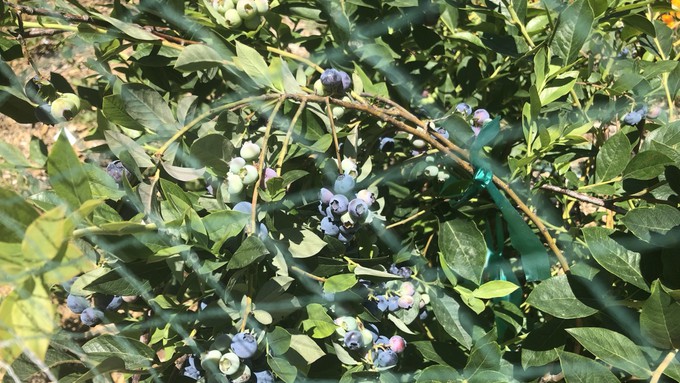
Placer County master gardeners offer free workshop

Certain varieties of blueberries do very well in our region, with the right location and right soil. (Also protection from wildlife, hence the netting barely seen here.) Learn the specifics in a free class this weekend in Loomis. Kathy Morrison
This free class is a real treat, devoted to one of the most popular edible ornamental plants – blueberries.
Hosted by the UCCE master gardeners of Placer County, “Sweet, Nutritious and Wildly Popular – Grow Your Own Blueberries” will offer a primer on how to start your own backyard blueberry patch.
Set for 10:30 a.m. Saturday, Feb. 10, this one-hour workshop will be held in person at Loomis Library, 6050 Library Drive, Loomis. No advance registration is necessary.
“Imagine waking up during spring and summer and walking out to your garden to pick fresh blueberries,” say the master gardeners. “Learn the basics for planting and caring for delicious blueberries in your home garden.”
Native to the eastern United States, blueberries can be a little tricky for California home gardeners. Most blueberry varieties need a different variety for pollination, but which pairings are most effective?
Blueberries also need “chill hours” – extended time under 45 degrees – to flower and set fruit. Southern highbush varieties such as Misty and Sunshine Blue need less chill than northern highbush varieties – an important factor to consider for Sacramento-area gardeners.
To do their best, blueberries need acidic soil, making them a good companion to azaleas and other acid-loving plants.
Popular blueberry varieties for home gardens are semi-dwarf (under 3 to 4 feet) and often evergreen, making for handsome plants year-round. Their early spring blooms look like little white to pale pink bells. But it’s those delicious blueberries that make this home crop so desirable.
Find out how to get blueberries off to a great start and to keep them producing for years to come.
Details and directions: https://pcmg.ucanr.edu/.
Comments
0 comments have been posted.Sacramento Digs Gardening to your inbox.
Sites We Like
Garden Checklist for week of July 21
Your garden needs you!
* Keep your vegetable garden watered, mulched and weeded. Water before 8 a.m. to reduce the chance of fungal infection and to conserve moisture.
* Feed vegetable plants bone meal, rock phosphate or other fertilizers high in phosphate to stimulate more blooms and fruiting. (But wait until daily high temperatures drop out of the 100s.)
* Don’t let tomatoes wilt or dry out completely. Give tomatoes a deep watering two to three times a week.
* Harvest vegetables promptly to encourage plants to produce more. Squash especially tends to grow rapidly in hot weather. Keep an eye on zucchini.
* Pinch back chrysanthemums for bushy plants and more flowers in September.
* Remove spent flowers from roses, daylilies and other bloomers as they finish flowering.
* Pinch off blooms from basil so the plant will grow more leaves.
* Cut back lavender after flowering to promote a second bloom.
* It's not too late to add a splash of color. Plant petunias, snapdragons, zinnias and marigolds.
* From seed, plant corn, pumpkins, radishes, winter squash and sunflowers.